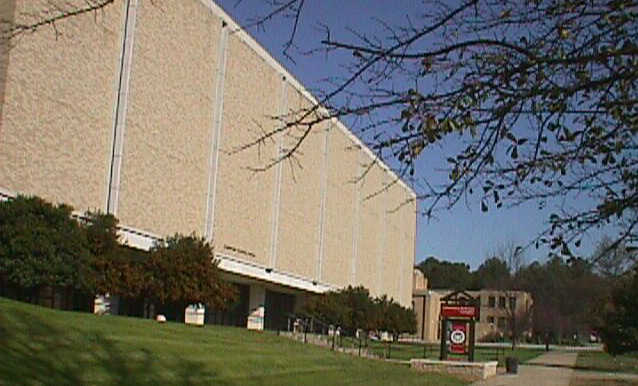
Department of Chemistry
and Physics
 |
Department of Chemistry and Physics |
| Answers |
Crystal Field Theory
|
1. Calculate the CFSE for both high spin and low spin octahedral complexes of Co(gly)63-. Which is preferred?
10Dq = 21476 cm-1, P = 23,625 cm-1,
d6 complex.
| H.S. CFSE = 4Dq - P = - 15034.6 cm-1 | L.S. CFSE = 24Dq - 3P = -19332.6 cm-1 |
| H.S. preferred, as expected when comparing 10Dq with P |
2. Determine whether the Co+2 complex with phenanthroline will prefer to be octahedral or tetrahedral based on CFSE.
d7 complex, 10DqOh =
12060 cm-1, P = 20800 cm-1: complex will be H.S.
Oh CFSE = 8Dq - 2P = -31952 cm-1
10DqTd = 5360 cm-1
Td CFSE = 12Dq - 2P = - 35168 cm-1
Oh preferred
3. Draw the M.O. diagram for an octahedral complex with six sigma donor ligands. Draw the electrons for a d5 high spin complex. see class notes
4. What are Jahn-Teller distortions? Where do they come from? Show 'z - in' and 'z-out' configurations. Which is preferred for a d9 configuration?
Tetragonal distortions arising from a) different distances for the ligands, b) ligands of different field strength, and c) to remove degeneracy.
d9 prefers z - out
5. Draw the expected splitting for a Cu(ox)34- complex. Would the splitting pattern change if two of the Cu-O bond lengths were longer than the other four?
Cu+2, d9 complex
6. Using the Tanabe-Sugano diagrams, give the ground states for the
free metal, high spin and low spin d5 complexes. What
are the first excited state for each of these? List all possible
transitions. Draw the microstates of the ground state for each of
the three species.
|
|
|
|
| Free metal ion |
|
|
| H.S. |
|
|
| L.S. |
|
|
Transitions:
H.S. - none
L.S. - 7 possible transitions
2T2g-
2A2g
2T2g-
2T1g
2T2g-
2Eg
2T2g-
2T2g
2T2g-
2T1g
2T2g-
2A1g
2T2g-
2A1g
7. Determine the spin state for each of the following:
| a) Fe(OH2)63+ | d5 H.S., 10Dq < P |
| b) V(CN)63- | d2 neither |
| c) CuI42- | d9 neither, even though Td always H.S, only one way to do diagram |
| d) RuCl64- | Ru+2 d6 2nd row transition metal, always L.S. |
8. Draw the expected splitting of the d orbitals for a trigonal bipyramidal geometry
H.S. always perferred for Td geometry since 10DqTd is small compared to pairing energies.
10. Determine the CFSE for the tetrahedral Co+2 complex with methylamine.
10DqOh = 10530 cm-1,
10DqTd = 4680 cm-1, P = 20800 cm-1,
CFSE = 12Dq - 2P = -35984 cm-1